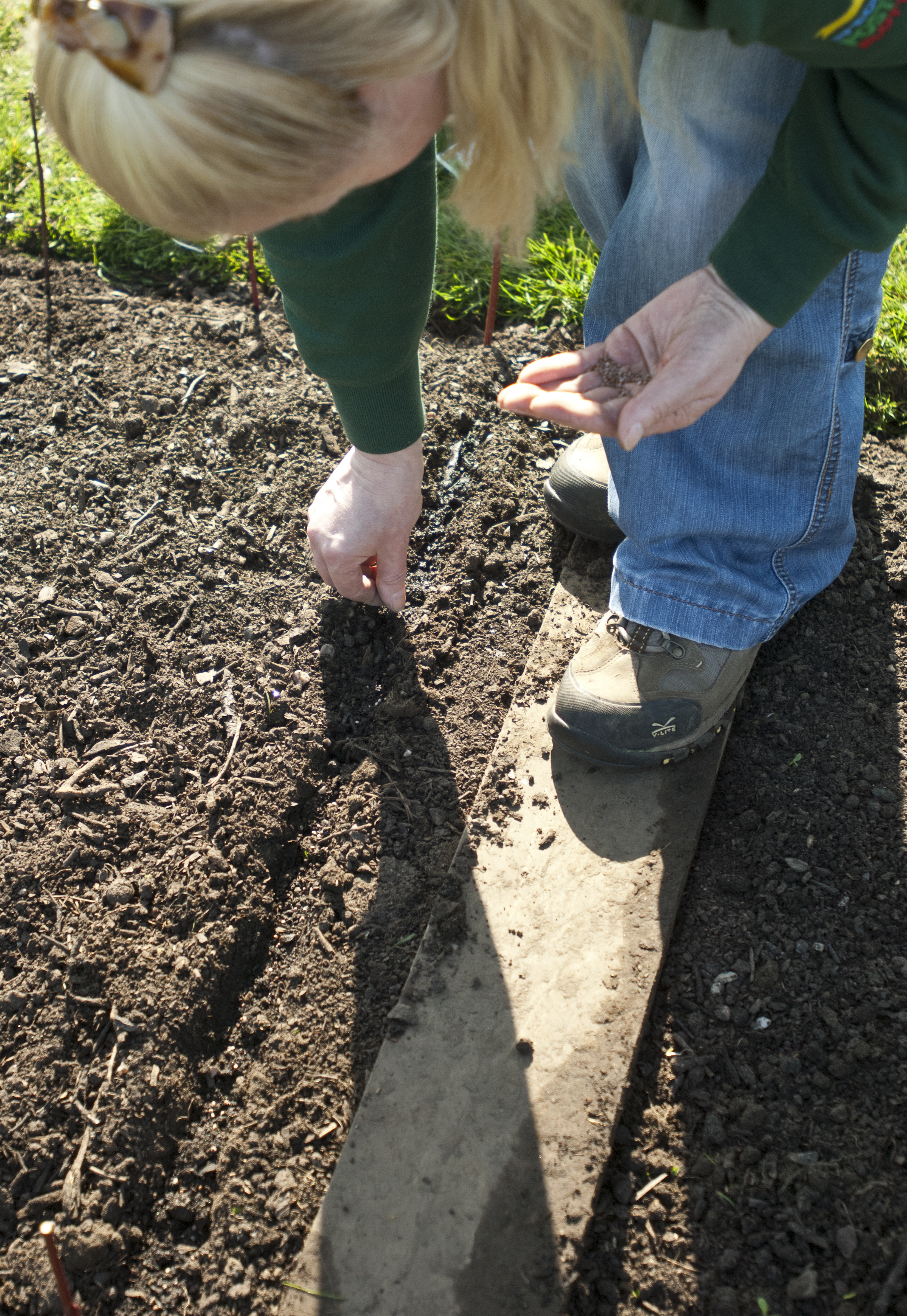We have been busy little bees in the garden this week and are sowing seed like mad. (Inbetween sunbathing and eating ice creams obviously, it’s all just so lovely and sunny!) This week Community Gardener Ben Dell goes through the basics for sowing seed outside.
Soil
- Seeds require a nice crumbly structured soil, or tilth, in which to germinate.
Creating a tilth
- Choose a fine dry day – the soil should be reasonably dry and not stick to your boots.
- Knock lumps out of the soil with a garden fork and rake backwards and forwards.
- Remove any large stone and debris.
How to sow
Beetroot, peas, broccoli, Brussels sprouts, cabbage, carrots, cauliflower, Chard, kale, kohl rabi, leeks, lettuce, radish, parsnips, spinach, rocket and turnips can all be sown outside now.The best place to look for sowing information is the back of the seed packet. Check how far apart the rows need to be.
Vegetables are sown in straight rows to help distinguish them from weeds that are also germinating.
- Position a cane or stick at each end of the row.
- Stretch a string or lay a plank between the canes to mark out a straight line.
- Create a drill or furrow by drawing a hoe or cane through the soil.
- The depth of the drill depends on the size of the seed. Seeds need to be b
 uried roughly twice as deep as their size.
uried roughly twice as deep as their size. - Put a few seeds in the palm of your hand, take a pinch at a time between your forefinger and thumb and drop the seeds along the drill.
- Try to sow thinly to prevent the plants becoming congested.
- For larger seed place the seed out at the required distance.
- Cover the seeds with well crumbled soil or compost.
- Water with a fine rose if the weather is dry.
- Thin the seedlings to their required spacing as soon as they are large enough to handle.
Handy tips:
Avoid windy days – seed will blow away
Label and date the rows – this information is vital for judging successes and failures for planning next years crops.
